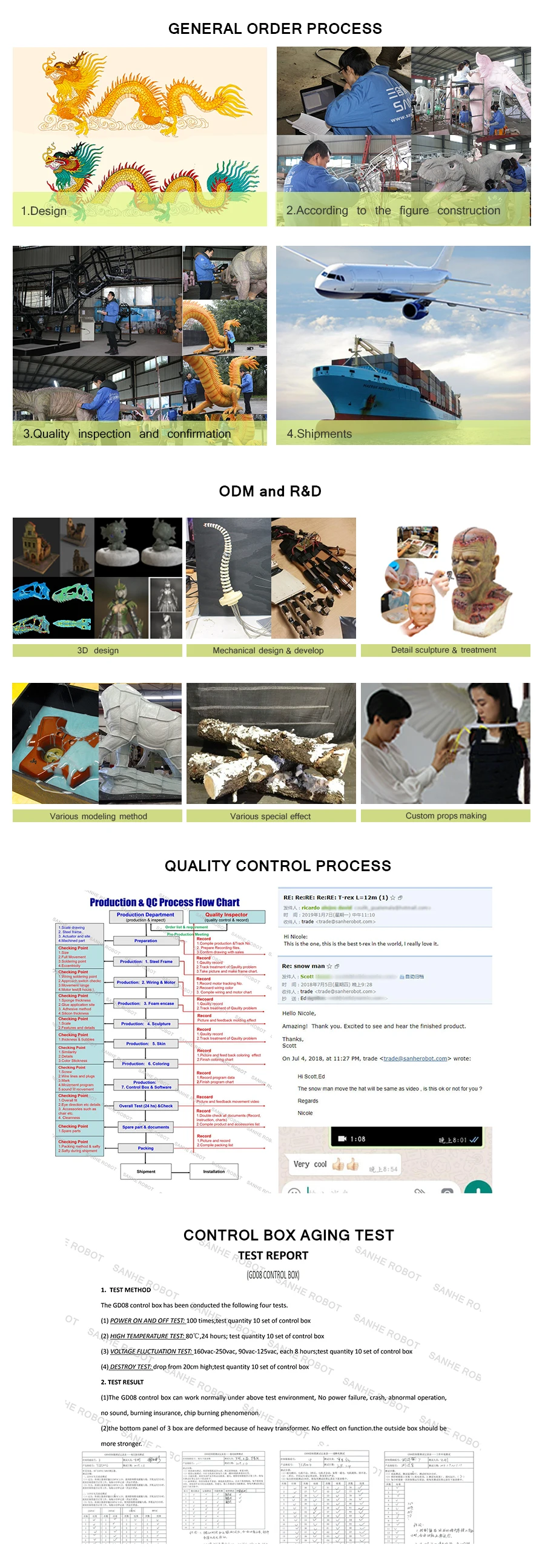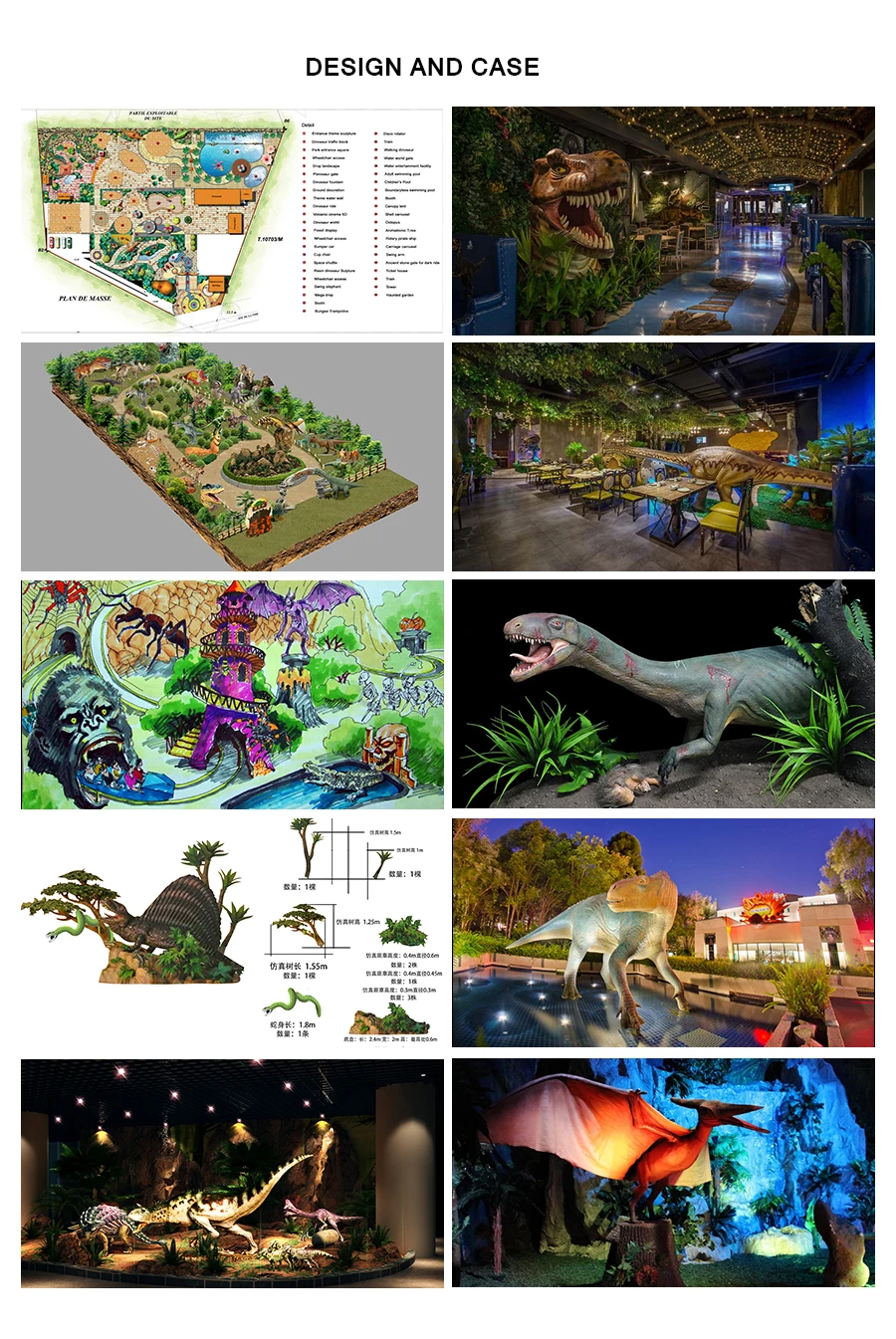Theme park simulator animal realist Woolly Rhinoceros model


MORE INFORMATION
| Input | AC 110/220V ,50-60HZ |
| Plug | Euro plug / British Standard / SAA / C-UL / or depends on request |
| Control mode | Automatic / Infrared / remote / coin / Button / Voice / Touch / Temperature / shooting etc. |
| Waterproofing grade | IP66 |
| Working condition | Sunshine, rain, seaside, 0~50℃(32℉~82℉) |
| Optional function | Sound can be increased to 128 kinds Smoke,/ water. / bleed / smell / change color / change lights / LED screen etc interactive(Location tracking) / conversine(currently only Chinese) |
AFTER-SALE SERVICE
| Service | Need be cut for shipping,fwill provide a detailed installation manual. |
| Warranty | We provide 2 years warranty for all of our antrimatronic models, the warranty pieriod starts from freight arrives at destination port. Our warranty covers motor, reducer, control box, etc. |






 animatronic animal zoo park animatronic animal indoor playground equipment for sale animal model for park robotic animal model life size artificial animal electric amusement park equipment outdoor playground animatronic animals theme park animatronic sculpture zoo park animatronic animal Museum exhibition robotic lifelike animal model Handmade playground animal statue animatronics live animals
Robotic animal realistic animal
The woolly rhinoceros (Coelodonta antiquitatis) is an extinct species of rhinoceros that was common throughout Europe and Asia during the Pleistocene epoch and survived until the end of the last glacial period. The woolly rhinoceros was a member of the Pleistocene megafauna.
The woolly rhinoceros was covered with long, thick hair that allowed it to survive in the extremely cold, harsh mammoth steppe. It had a massive hump reaching from its shoulder and fed mainly on herbaceous plants that grew in the steppe.
Mummified carcasses preserved in permafrost and many bone remains of woolly rhinoceroses have been found. Images of woolly rhinoceroses are found among cave paintings in Europe and Asia.
Woolly rhinoceros remains have been known long before the species was described, and were the basis for some mythical creatures. Native peoples of Siberia believed their horns were the claws of giant birds.A rhinoceros skull was found in Klagenfurt, Austria, in 1335, and was believed to be that of a dragon.In 1590, it was used as the basis for the head on a statue of a lindworm. Gotthilf Heinrich von Schubert maintained the belief that the horns were the claws of giant birds, and classified the animal under the name Gryphus antiquitatis, meaning "ancient griffin".
One of the earliest scientific descriptions of an ancient rhinoceros species was made in 1769, when the naturalist Peter Simon Pallas wrote a report on his expeditions to Siberia where he found a skull and two horns in the permafrost. In 1772, Pallas acquired a head and two legs of a rhinoceros from the locals in Irkutsk,and named the species Rhinoceros lenenesis (after the Lena River).[8] In 1799, Johann Friedrich Blumenbach studied rhinoceros bones from the collection of the University of G?ttingen, and proposed the scientific name Rhinoceros antiquitatis.The geologist Heinrich Georg Bronn moved the species to Coelodonta in 1831 because of its differences in dental formation with members of the Rhinoceros genus.This name comes from the Greek words κοιλ?α (koilía, "cavity") and ?δο?? (odoús "tooth"), from the depression in the rhino's molar structure,12giving the scientific name Coelodonta antiquitatis, "ancient hollow tooth
animatronic animal zoo park animatronic animal indoor playground equipment for sale animal model for park robotic animal model life size artificial animal electric amusement park equipment outdoor playground animatronic animals theme park animatronic sculpture zoo park animatronic animal Museum exhibition robotic lifelike animal model Handmade playground animal statue animatronics live animals
Robotic animal realistic animal
The woolly rhinoceros (Coelodonta antiquitatis) is an extinct species of rhinoceros that was common throughout Europe and Asia during the Pleistocene epoch and survived until the end of the last glacial period. The woolly rhinoceros was a member of the Pleistocene megafauna.
The woolly rhinoceros was covered with long, thick hair that allowed it to survive in the extremely cold, harsh mammoth steppe. It had a massive hump reaching from its shoulder and fed mainly on herbaceous plants that grew in the steppe.
Mummified carcasses preserved in permafrost and many bone remains of woolly rhinoceroses have been found. Images of woolly rhinoceroses are found among cave paintings in Europe and Asia.
Woolly rhinoceros remains have been known long before the species was described, and were the basis for some mythical creatures. Native peoples of Siberia believed their horns were the claws of giant birds.A rhinoceros skull was found in Klagenfurt, Austria, in 1335, and was believed to be that of a dragon.In 1590, it was used as the basis for the head on a statue of a lindworm. Gotthilf Heinrich von Schubert maintained the belief that the horns were the claws of giant birds, and classified the animal under the name Gryphus antiquitatis, meaning "ancient griffin".
One of the earliest scientific descriptions of an ancient rhinoceros species was made in 1769, when the naturalist Peter Simon Pallas wrote a report on his expeditions to Siberia where he found a skull and two horns in the permafrost. In 1772, Pallas acquired a head and two legs of a rhinoceros from the locals in Irkutsk,and named the species Rhinoceros lenenesis (after the Lena River).[8] In 1799, Johann Friedrich Blumenbach studied rhinoceros bones from the collection of the University of G?ttingen, and proposed the scientific name Rhinoceros antiquitatis.The geologist Heinrich Georg Bronn moved the species to Coelodonta in 1831 because of its differences in dental formation with members of the Rhinoceros genus.This name comes from the Greek words κοιλ?α (koilía, "cavity") and ?δο?? (odoús "tooth"), from the depression in the rhino's molar structure,12giving the scientific name Coelodonta antiquitatis, "ancient hollow tooth

+86-813-2104677

info@sanherobot.com

+86-13990010824

No.13 Huixin Road, Yantan Town, Yantan District, Zigong City, Sichuan Province, China